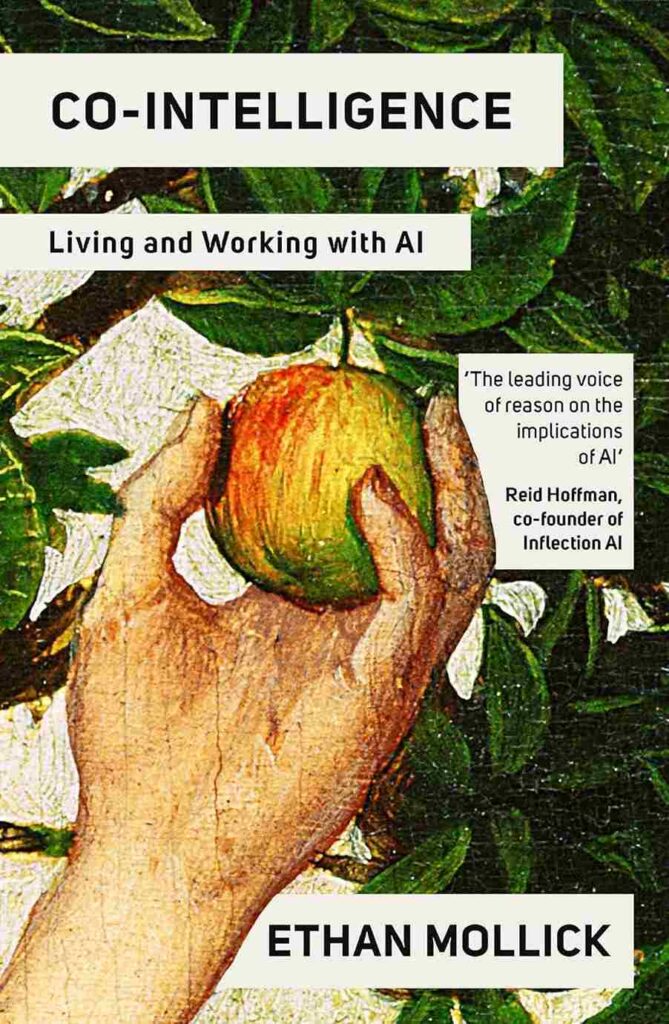Reviewed by Dr. Debleena Bhattachaarya

It was on a flight from Delhi to Bengaluru that I encountered ‘Co-Intelligence’ by Ethan Mollick, a book that arrived at precisely the right moment in our AI revolution. Written by a business school professor known for his accessible commentary on AI developments through social media, Mollick strips away the technical complexity to present a nuanced, practical guide for navigating our AI-augmented future.
The book’s central premise revolves around the concept of ‘co-intelligence’ – a framework for understanding how modern knowledge workers can effectively collaborate with AI tools. Mollick draws from his own experience writing the book, where he leveraged various AI personas representing his target audience to gather feedback and refine his writing process, demonstrating the very principles he advocates.
What sets this book apart is its balanced approach to AI integration. While acknowledging AI’s transformative potential, Mollick emphasizes the crucial role of human oversight. He advocates for treating AI as a collaborative partner while maintaining critical evaluation of its outputs, particularly given AI’s tendency to occasionally ‘hallucinate’ or generate plausible but incorrect information.
One of the most fascinating aspects the book explores is the emerging concept of agentic AI workflows. Imagine planning a 5-day trip to Australia – traditionally a complex task involving countless decisions about flights, accommodations, and local transportation. With agentic AI, you could delegate these decisions to multiple AI agents working in parallel, each verifying the others’ work before presenting you with optimized options. This represents a fundamental shift in how we might approach complex tasks, supporting the growing belief that while AI won’t replace jobs entirely, professionals who effectively leverage AI will likely outperform those who don’t.
The book also delves into AI’s potential as a creative force, capable of generating novel ideas by connecting seemingly unrelated concepts. However, Mollick doesn’t shy away from addressing ethical considerations, including the importance of addressing biases in AI systems and ensuring their alignment with human values.
As we stand on the brink of an era where we might work alongside hundreds or thousands of AI assistants, Mollick raises pertinent questions: Are we prepared to embrace this future? Can we effectively curate these AI assistants while maintaining meaningful control and understanding of our work?
I finished this compelling read during a three-hour flight, and have since recommended it to numerous professionals grappling with AI integration in their work. For anyone looking to reinvent themselves in 2025, this book offers practical guidance for navigating the AI-augmented future while maintaining human agency and creativity at its core.

